PDF files have become an essential part of our digital lives. We use them to create and share invoices, reports, contracts, and countless other documents every day.
Here, you’ll learn several ways to add password protection to your PDFs. This guide also explains how you can securely store and share your PDF files using a password manager like 1Password.
Why protect your PDF files?
By default, a PDF file can be opened and viewed by anyone. This is often useful and convenient. For example, if you run a restaurant, you want everyone to be able to visit your website and look at a PDF version of your menu.
But PDFs can also be used to record and share private information. You might create one for your company’s next quarterly earnings, or to prove to a mortgage lender that you’re earning enough to buy a home. The best way to keep these types of PDFs secure is by protecting them with a strong password.
A quick search online will reveal many websites and apps that promise to add password protection to your PDFs. Some but not all are trustworthy. We won’t go through every option – instead, we’ll highlight three of the safest and simplest solutions.
Setting a password with Adobe Acrobat Pro
Adobe Acrobat is an app that lets you create, view, edit, and print PDF files. It comes in two versions: Standard and Pro. If you’re using Adobe Acrobat Pro, you have a few options for controlling who can access your PDFs, and whether people have permission to copy, edit, or print them out.
Follow these steps to add a password that will prevent people from viewing or editing your PDF:
- Choose Tools > Protect > Protect Using Password.
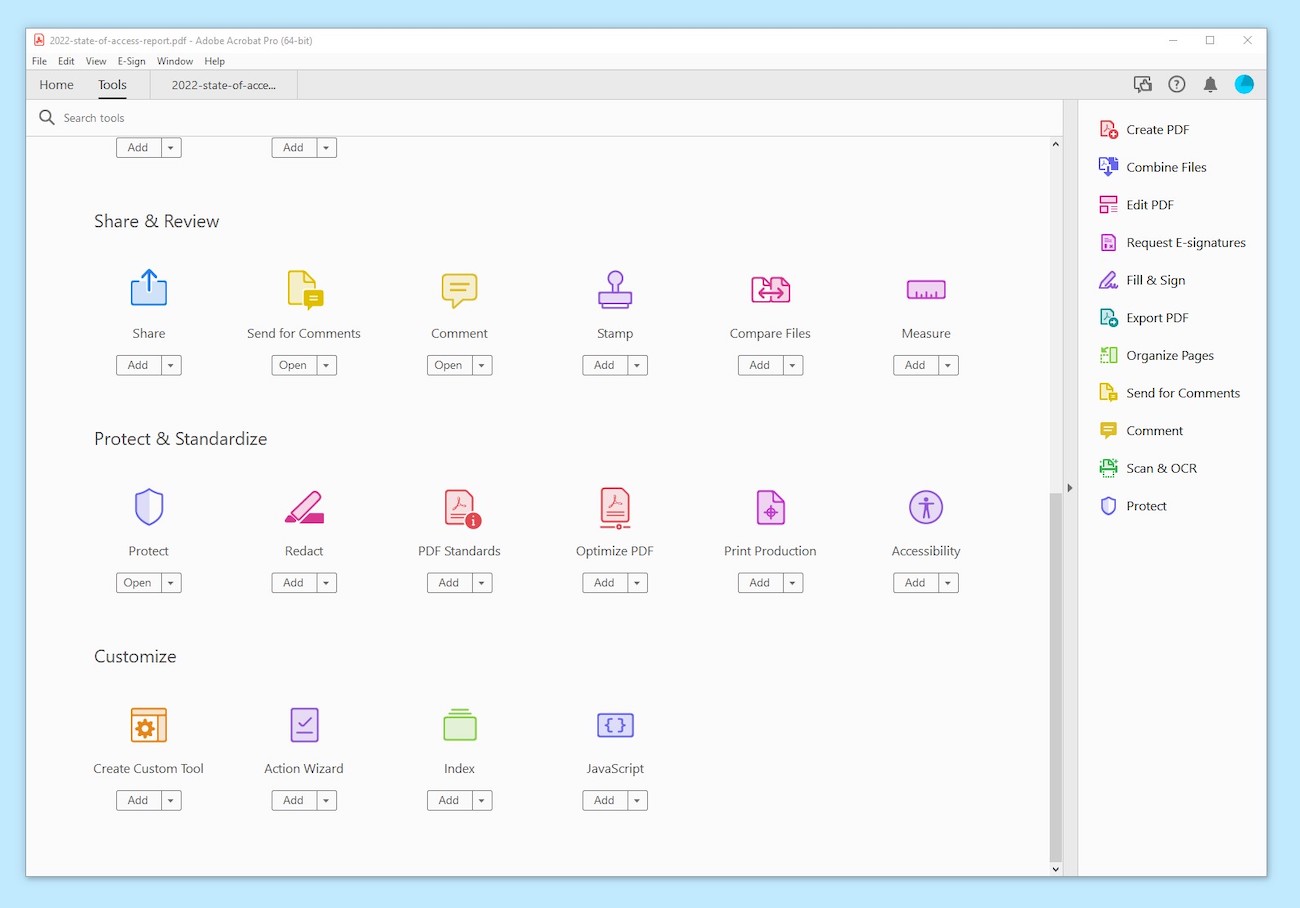
- Choose Viewing or Editing.
- Type and retype your password, then select Apply.
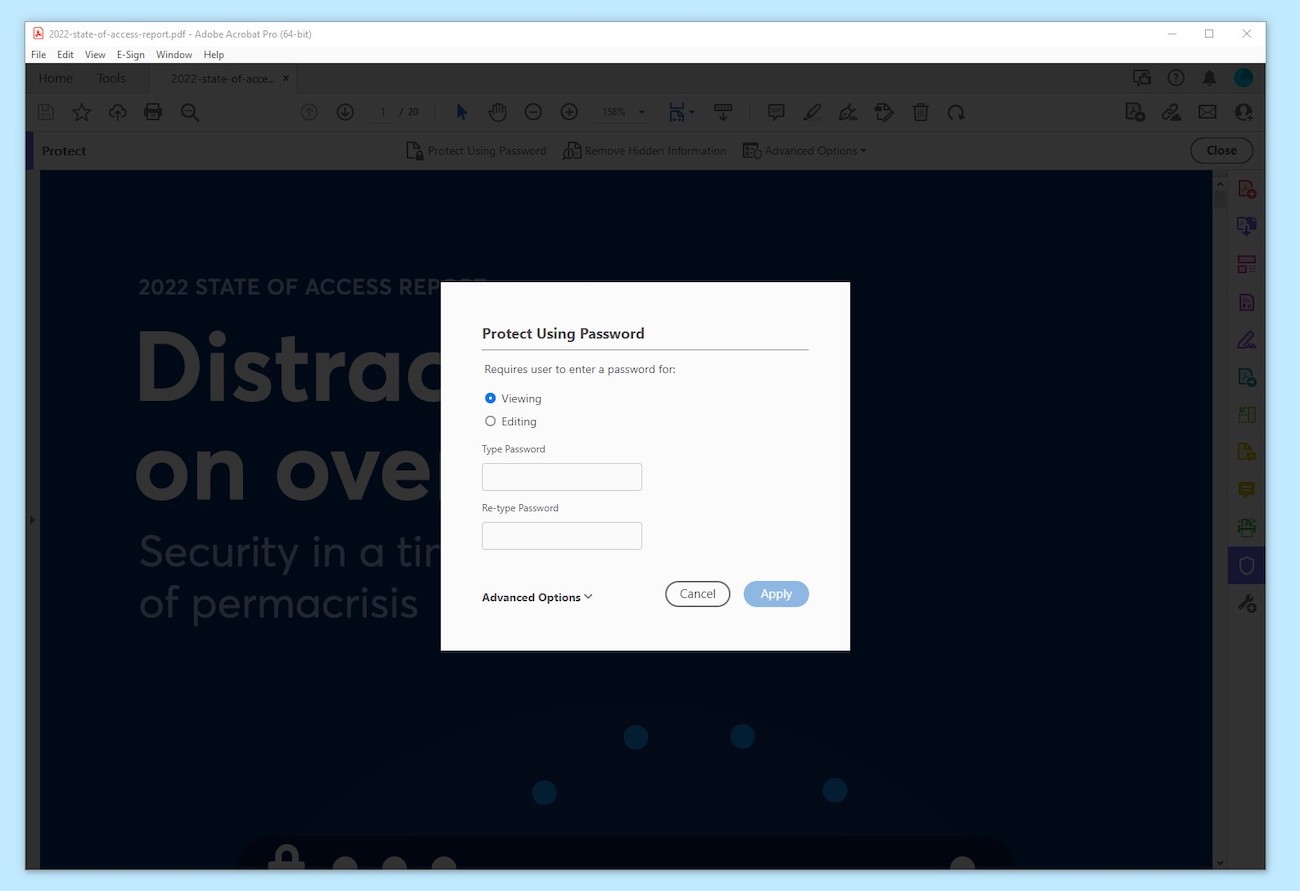
You can go a step further and use Adobe Acrobat Pro to encrypt the contents of your PDF files, too. This option also lets you set more granular permissions, such as whether someone can copy any of the text, images, or other content contained within the file.
To encrypt a PDF file with Adobe Acrobat Pro:
- Choose Tools > Protect > Advanced Options > Encrypt with Password.
- Select Yes to change the security settings on the document.
- A Password Security window will appear. Choose Require a Password to Open the Document, then type your password in the corresponding field.
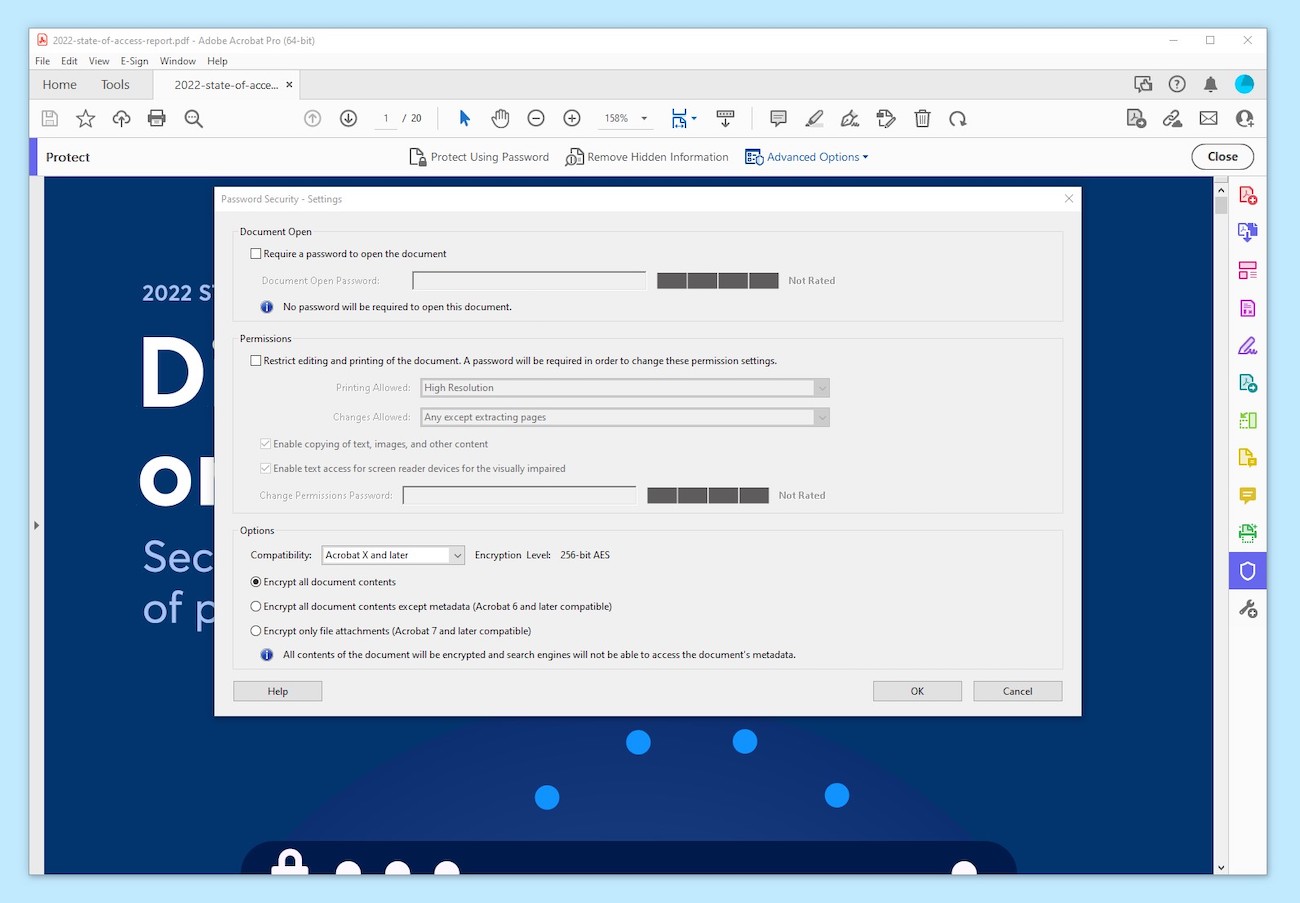
You’ll then see three options:
Encrypt all document contents. Encrypts all of the content in your document, including the metadata.
Encrypt all document contents except metadata (Acrobat 6 and later). Encrypts all of the content in your document, but search engines will still be able to access the file’s metadata.
Encrypt only file attachments (Acrobat 7 and later). Creates a password for opening file attachments. This is useful if you work for an organization that uses Security Envelopes to protect and send multiple PDF files at once.
In this window, you’ll also see a section called Permissions, which lets you control what other people can do with the document. The options here include:
- Restricting editing and printing of the document.
- Enabling or disabling copying of text, images, and other content.
- Enabling text access for screen readers.
Confirm your password and select OK when you’re happy with the options you’ve chosen.
Setting a password with Adobe’s free online tool
Don’t have a subscription to Adobe Acrobat Pro? No problem. You can still password protect your PDF files using a free online tool created by Adobe.
You’ll need an Adobe account to use this website. Once you’ve created or signed in with one, you’ll be able to upload a PDF, set a password, and download the newly-protected file.
Setting a password in the Preview app with macOS
Another way to password protect your PDFs is by using the Preview app that comes preinstalled on every Mac. Like Adobe Acrobat Pro, this app lets you customize the protection applied to your PDFs. You can set a password for opening and editing the file, as well as granular permissions like printing, copying, and editing.
Follow these steps to password protect a PDF file with the Preview app on macOS:
- Open the PDF in Preview, then choose File > Export.
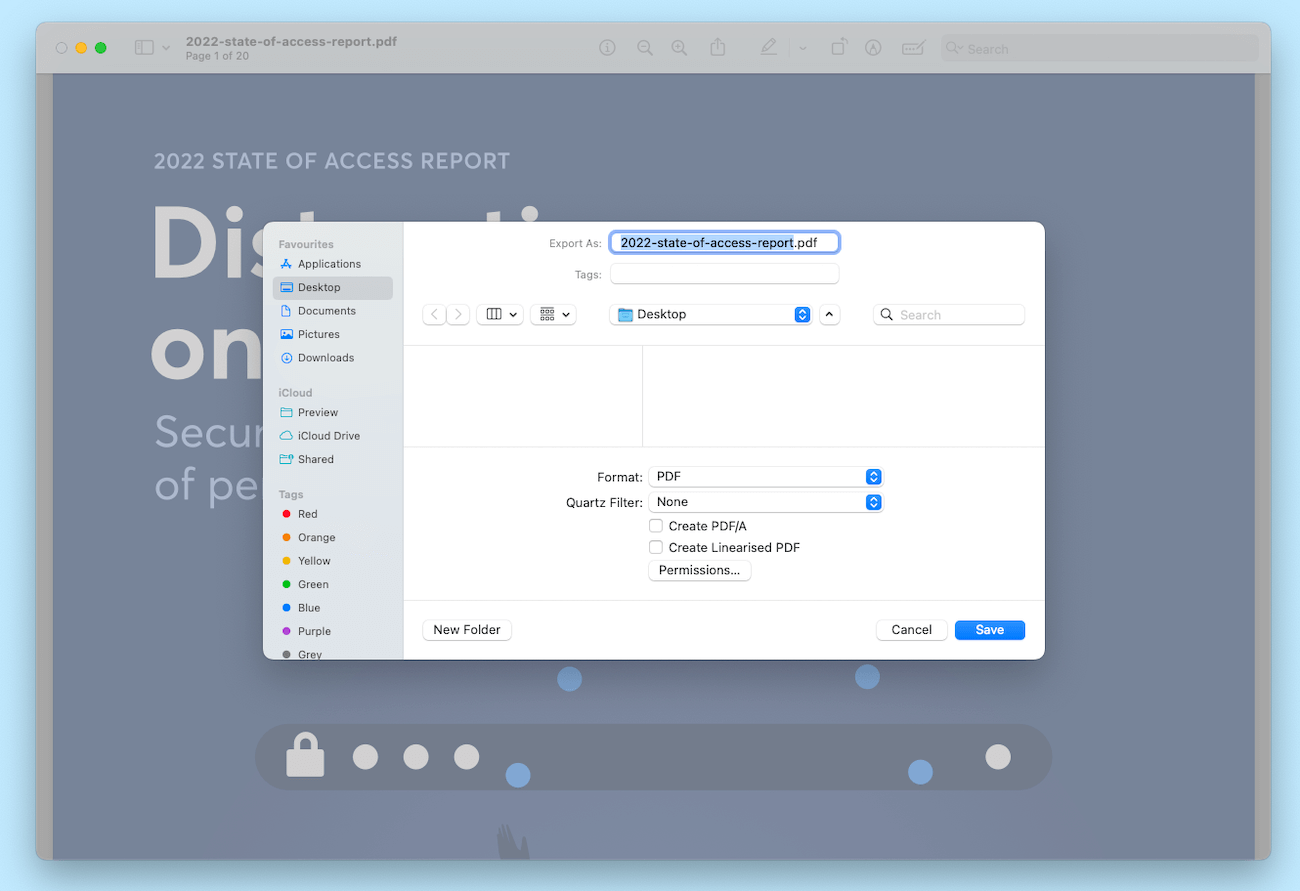
- Choose Permissions. You’ll then see a variety of options. At the top, you can set a password to open the PDF by choosing Require Password to Open Document. When prompted, type your password, then retype to confirm.
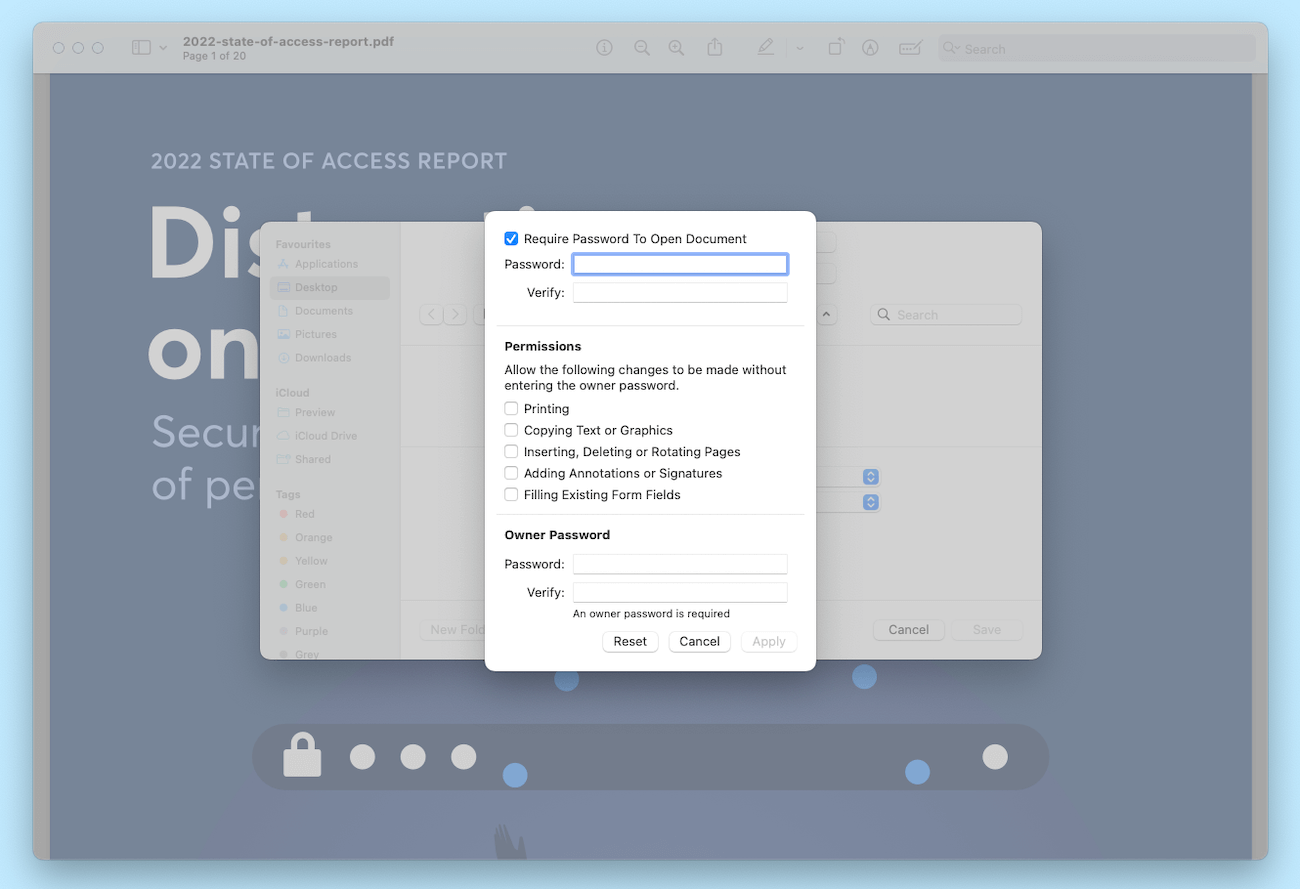
The Permissions screen also gives you a number of granular options. You can require a password to:
- Copy text or images
- Insert, delete, or rotate pages
- And more!
Once you’ve checked the appropriate boxes, you’ll need to enter a password in the Owner Password field (this password can be the same as the one you chose for opening the document). Choose Apply, then Save.
You can manage the permissions of your PDF file at any time by selecting File > Edit Permissions.
How a password manager can help secure your PDFs
Adobe’s tools and the macOS Preview app are a great way to password protect your PDF files. But it can be challenging to create and remember passwords for all your private PDFs. That’s where a password manager like 1Password comes in.
A password manager helps you create and remember strong passwords for everything else that’s important in your digital life, including your PDF files.
You can also use 1Password to securely share passwords with other people. With 1Password Families and 1Password Business, you can create and share vaults with your family members and co-workers. These vaults are like special folders that you can use to organize and securely share multiple items that you’ve stored in 1Password.
You can also use item sharing, which lets you share individual passwords with anyone – even people who don’t have a password manager.
1Password is a secure place to store everything that’s important in your digital life, including important files and documents.
1Password isn’t just for passwords – it’s a secure place to store everything, including important files and documents. You can store PDF files directly in 1Password and securely share them using shared vaults and item sharing, just like your passwords and other sensitive information.
Simple. Secure. With 1Password, you can store passwords, PDFs, and any other private data that you want to keep safe and readily available on all your devices.

 by 1Password on
by 1Password on


